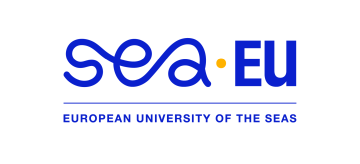This PHD project is in the continuity of our SWOT proposal (DIEGO, WP6 – P. Rivière) funded by CNES. It builds upon the high resolution altimetric data that will come out from the fast sampling phase of SWOT in 2023.
Submesoscale structures, associated with intense vertical velocities during frontogenesis, can stimulate surface primary production by local nutrient inputs into the well-lit surface layers and thus impact the entire food web up to top predators (Rivière et al. 2019, Siegelman et al 2019-a, Lévy et al. 2012). However only a few studies have addressed this issue because of the great difficulty of observing both the physical and biological processes involved at the same time and at these scales. But another reason is the difficult to get a precise estimation of the strain field which is responsible of the frontogenesis. Zhang et al. (2019) initiated a first approach in this direction by combining Lagrangian float data and satellite observations. They demonstrated, on a global scale, the strong relationship between mesoscale deformation field, frontogenesis and surface primary production. They showed that regions of highest strain intensity are regions where the surface primary production, estimated as the Lagrangian derivative of the chlorophyll concentration, is high. Following the same approach, Zhang and Qiu (2020) examined also the dynamics of spiral chlorophyll filaments observed at the periphery of mesoscale eddies.
All these results, obtained with low resolution conventional altimetry, clearly confirmed that filaments of chlorophyll observed in ocean color images are stimulated by the dynamics of submesoscale structures (in particular vertical velocities) rather than simple tracer lines elongated by the straining flow field. The SWOT mission will provide a new altimetric dataset with a high-resolution never reached before, ten times finer than AVISO. In particular SWOT’s high spatial resolution will allow to describe the deformation field associated to mesoscale eddies as it was never done before. This strain field at fine scale (or the cross-front horizontal velocity gradient) is crucial for the estimation of density gradient growth rate and associated vertical velocity (Siegelman et al 2020) which play an important role in stimulating primary production. In this PhD project we propose to combine this high-resolution altimetric data from SWOT, during the fast sampling phase because of the high resolution in space and time, with high-resolution ocean color images to estimate with unprecedented accuracy the primary production in submesoscale structures.
The first step of this PhD subject proposes to develop new tools to estimate the strain field from satellite SWOTdata. Recent studies using innovative Lagrangian tools (Berti & Lapeyre 2014) have shown that it was possible to reconstruct a high-resolution SST field from low resolution SST and altimetry in SQG simulations. This methodology will be tested, in the Gulf Stream area, by using a high-resolution numerical simulation (GIGATL)to deduce, from SQG approximation, a high-resolution estimation of the strain field.
This strain field will be compared to Lyapunov exponents that have been shown to be good indicator of frontogenesis (Siegelman et al.2019-b). This methodology will then be implemented in different regions with real altimetric data from the SWOT fast sampling phase. The regions will be chosen according to Lawrence and Callies (2022) to ensure a minimum effect of internal tides on the submesoscale dynamics and avoid the filtering of internal tides from SWOT data.
The second step of this PhD thesis will then use these new estimations of the strain field to detect and quantify submesosclale fronts, including diagnosis of vertical velocity using the ω-equation, during the fast sampling phase.
This step is a crucial step that will identify the regions of high deformation rates and characterize the associated submesoscale fronts with a completely novel satellite altimetric dataset.
Then the third step of the PhD thesis will characterize and quantify the primary production of such submesoscale fronts by using Lagrangian surface drifters in different oceanic regions combined with SWOT altimetry and high- resolution ocean color products in strong strain rate areas following a methodology close to Zhang et al. 2019. The expected results will reveal, at an unprecedented resolution with observations, the surface primary production induced by submesoscale fronts in high strain regions.
The PhD student, based at the LEMAR, will be supervised by Pascal Rivière (HDR, LEMAR, Brest), in collaboration with Guillaume Lapeyre (LMD Paris) and Jonathan Gula (LOPS, IUEM) who are both involved in DIEGO CNES-TOSCA, and Patrice Klein (LMD, Paris – CalTech, Pasadena, USA).
“ Submescale Fronts Dynamics and Primary Production from Space ”
(“ Détermination des fronts de sub-mésoéchelle et de leur production
primaire grâce aux données altimétriques : mission spatiale SWOT “)
Dir. thèse : Pascal Rivière (LEMAR UMR6539) – Financement : CNES – ISBlue
Contact : Pascal.Rivière@univ-brest.fr
IMPORTANT : 2 application forms to submit (1) CNES pre-selection (2) EDSML selection
– CNES (deadline : 16/03/2023) : https://recrutement.cnes.fr/fr/annonce/2037949-23-158-submesoscale-fronts-dynamics-and-primary-production-from-space-29280-plouzane
– EDSML-TEBL (deadline : 16/03/2023) : https://theses.doctorat-bretagneloire.fr/sml/campagne-2023
https://theses.doctorat-bretagneloire.fr/sml/campagne-2023/determination-des-fronts-de-submesoechel



Leave a Reply